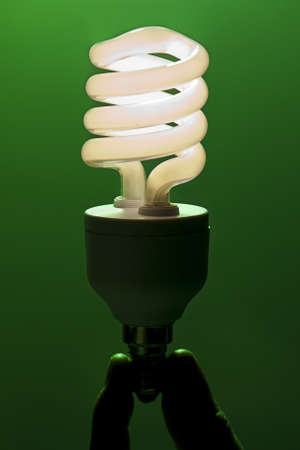1. Understanding Feng Shui Principles for Lighting
Feng Shui, an ancient Chinese practice, is all about creating spaces where energy, or “Chi,” flows smoothly to support health, happiness, and prosperity. In the modern American home, lighting plays a key role in shaping this energy. Good Feng Shui lighting means more than just brightening a room; it’s about choosing fixtures and placements that boost positivity and harmony.
What Is Chi and Why Does It Matter?
Chi is the life force energy present everywhere—indoors and outdoors. When Chi moves freely through your home, you feel more comfortable and balanced. But when it’s blocked or stagnant, it can lead to stress or unease. Lighting is one of the most effective tools for managing Chi because it impacts mood, visibility, and how we experience a space.
The Role of Lighting in Feng Shui
Lighting influences energy flow by eliminating dark corners (where Chi can get stuck) and highlighting focal points that create good vibes. Both natural light from windows and artificial light from fixtures are important. The right combination brings warmth, clarity, and vibrancy to any room.
Key Feng Shui Lighting Principles
| Principle | What It Means | How Lighting Helps |
|---|---|---|
| Balance Yin & Yang | Yin is calm and soft; Yang is bright and active | Use dimmers and layered lighting to adjust for different needs |
| Avoid Shadows & Dark Corners | Dark spots block energy flow | Add floor lamps or wall sconces to brighten shadowy areas |
| Welcome Natural Light | Natural light brings vitality indoors | Keep windows clear of heavy drapes; use mirrors to reflect sunlight |
| Create Focal Points | Direct energy where you want attention—like art or plants | Use spotlights or pendant lights over special features |
| Select Fixture Styles Mindfully | Certain shapes and materials enhance positive energy | Choose rounded or organic forms in calming colors for fixtures |
The Connection Between Light and Well-Being
The right lighting doesn’t just look good—it feels good. Bright, even lighting helps you stay alert during the day while softer lights encourage relaxation at night. By following basic Feng Shui guidelines with your lighting choices, you can make your home more welcoming, harmonious, and supportive of your daily life.
2. Selecting Modern Lighting Fixtures for Energy Balance
Choosing the right modern lighting fixtures can make a big difference in how energy flows through your home. In Feng Shui, good lighting uplifts the energy, creates harmony, and helps you feel comfortable. Today’s American homes blend style with function, so it’s important to select fixtures that not only match Feng Shui principles but also suit your personal taste and local design trends.
Contemporary Lighting Styles That Align with Feng Shui
When shopping for lighting, look for designs that bring both brightness and balance. Here are some popular contemporary styles often found in American homes:
| Lighting Style | Description | Feng Shui Benefit |
|---|---|---|
| Minimalist LED Fixtures | Sleek lines, soft glow, energy-efficient | Promotes clarity and reduces cluttered vibes |
| Mid-Century Modern Lamps | Warm tones, simple shapes, natural materials | Adds warmth and invites positive Chi (energy) |
| Industrial Pendant Lights | Metal finishes, exposed bulbs, bold look | Boosts energy in active spaces like kitchens |
| Smart Recessed Lighting | Customizable brightness, subtle presence | Allows easy adjustment for mood and balance |
| Artisan Glass Fixtures | Hand-blown glass, unique colors or patterns | Adds personality and supports creative flow |
Selecting Materials for Harmony and Energy Flow
The materials you choose for your lighting can impact both style and energy. For example, metal represents clarity and focus, wood brings growth and vitality, while glass spreads light evenly throughout a room. Mixing these materials thoughtfully can help balance Yin (calm) and Yang (active) energies in your space.
| Material | Main Feng Shui Element | Best Placement Area |
|---|---|---|
| Wood (Bamboo/Laminate) | Growth & Renewal (Wood Element) | Living rooms, bedrooms for calm and support |
| Metal (Brushed Nickel/Steel) | Clarity & Precision (Metal Element) | Home office or study areas for focus |
| Glass or Crystal | Purity & Light Spread (Water Element) | Main entryway or dining room for welcoming energy |
| Ceramic or Stone Finishes | Stability & Grounding (Earth Element) | Kitchens or bathrooms to anchor energy flow |
| Mixed Materials (Wood + Metal) | Balance of Elements | Larger open spaces to harmonize activity levels |
Tips for Blending Feng Shui with American Home Trends
- Aim for layers: Use a mix of overhead lights, floor lamps, and table lamps to create depth and flexibility in each room.
- Select dimmable options: Adjustable lighting lets you control the energy level as needed—bright during gatherings, softer when relaxing.
- Avoid harsh glare: Choose diffused bulbs or frosted covers to maintain gentle light flow.
- Match fixture size to room scale: Oversized chandeliers work well in open-plan living spaces; smaller pendants fit cozy corners.
Your Lighting Choices Matter!
The right modern lighting not only brightens your home but also supports a healthy energy flow according to Feng Shui principles. By mixing contemporary styles with harmonious materials, you can create a home that feels both stylish and energetically balanced—perfect for life in America today.
![]()
3. Strategic Placement of Lights to Optimize Chi
Why Lighting Placement Matters in Feng Shui
In Feng Shui, “chi” refers to the vital energy that flows through your home or workspace. Modern lighting solutions can help support this flow, creating a more balanced and harmonious environment. The key is to place lights thoughtfully so that each area feels vibrant and alive, but not overwhelming or stagnant.
How to Position Lighting for Optimal Energy Flow
Every room in your home has unique needs when it comes to lighting. Consider these American living scenarios for practical placement:
| Room | Recommended Lighting Type | Feng Shui Tip |
|---|---|---|
| Living Room | Floor lamps, wall sconces, dimmable ceiling lights | Place lamps in dark corners to prevent stagnant chi and create a welcoming vibe for family and guests. |
| Kitchen | Under-cabinet LED strips, pendant lights over islands | Brighten workspaces to energize the heart of your home and support healthy meal preparation. |
| Bedroom | Table lamps with warm bulbs, soft wall-mounted fixtures | Avoid harsh overhead lights; use pairs of lamps for balance and restful sleep. |
| Home Office | Adjustable desk lamp, daylight-balanced bulbs | Position lighting to minimize shadows and boost productivity without glare on screens. |
| Entryway/Hallway | Sconces, track lighting, motion-activated LEDs | Keep pathways well-lit to encourage smooth energy flow into and throughout the home. |
The Do’s and Don’ts of Light Placement in Real Life Settings
- Do: Layer different types of light (ambient, task, accent) to adapt to various activities and moods.
- Don’t: Let any area become too dim or gloomy—this can cause chi to stagnate and lower the room’s energy.
- Do: Use mirrors strategically near light sources to reflect light and amplify positive energy around the space.
- Don’t: Place bright lights directly above beds or seating areas; opt for softer side lighting instead.
- Do: Regularly check that all bulbs are working and fixtures are clean—burnt-out bulbs block the flow of good chi.
Easy Upgrades for American Homes and Workspaces
If you’re just getting started with Feng Shui lighting, try swapping out old fixtures for modern dimmable LEDs or smart bulbs. These allow you to adjust brightness according to time of day or activity. Even small changes—like adding a cheerful lamp in a forgotten corner or updating a hallway with motion sensors—can make a noticeable difference in how your space feels.
4. Color Temperature and Its Impact on Mood and Energy
Understanding Warm vs. Cool Lighting in Feng Shui
When it comes to Feng Shui, the color temperature of your lighting can have a big impact on the energy flow—or “chi”—in your home. In simple terms, color temperature refers to how warm or cool the light appears, measured in Kelvins (K). Warm lighting creates a cozy, relaxing environment, while cool lighting is energizing and helps with focus.
How Different Color Temperatures Affect Your Space
| Color Temperature (Kelvins) | Light Appearance | Mood & Energy Effect | Best Locations |
|---|---|---|---|
| 2700K-3000K | Warm White | Relaxing, Cozy, Comforting | Living Room, Bedroom |
| 3500K-4100K | Neutral White | Balanced, Inviting, Productive | Kitchen, Dining Room |
| 5000K-6500K | Cool White/Daylight | Energizing, Focused, Alertness | Home Office, Bathroom, Garage |
Selecting Bulbs That Support Feng Shui Goals
The right bulb does more than just light up a room—it shapes the mood and energy. For spaces where you want to relax or unwind, like bedrooms and living rooms, go for bulbs labeled “warm white” or around 2700K. If you need concentration and mental clarity in your workspace or home office, choose “cool white” bulbs in the 5000K range.
Tips for Choosing Bulbs:
- Check the Kelvin rating: Look at the bulbs packaging for the Kelvin number to match your room’s purpose.
- Dimmable options: Dimmable bulbs allow flexibility to adjust light intensity based on time of day or activity.
- Energy efficiency: LED bulbs last longer and use less energy while offering a wide range of color temperatures.
Smart Lighting Systems for Dynamic Feng Shui Adjustments
Smart lighting systems let you easily shift between warm and cool lighting throughout the day. For example, start your morning with energizing daylight tones in the kitchen, then switch to a softer glow in the evening. Many smart bulbs can be controlled by apps or voice assistants like Alexa or Google Home, making it simple to support positive chi flow without any hassle.
5. Common Mistakes to Avoid in Modern Feng Shui Lighting
Understanding Lighting Pitfalls
When updating your home with modern fixtures to boost feng shui energy, it’s easy to make lighting mistakes that disrupt balance rather than enhance it. In American homes, these errors often happen because of the wide range of lighting options and personal style preferences. Let’s look at the most common issues and how you can easily fix them using products available in local stores like Home Depot, Lowe’s, or Target.
Frequent Lighting Mistakes and Their Solutions
| Mistake | Description | How to Fix It |
|---|---|---|
| Over-lighting a Room | Too many fixtures or high-wattage bulbs create harshness and stress, blocking the smooth flow of chi (energy). | Choose dimmable LED bulbs or install smart dimmer switches so you can adjust brightness as needed for different activities. |
| Harsh Glare from Fixtures | Uncovered bulbs, shiny metal finishes, or poorly placed lights lead to eye strain and agitation. | Opt for frosted covers or lampshades. Place floor or table lamps with soft fabric shades to diffuse light gently. |
| Poor Placement | Lights pointed directly at seating areas or beds create discomfort and disturb relaxation zones. | Aim lights upward or use wall sconces to bounce light off ceilings and walls, creating a softer effect. |
| Ignoring Natural Light | Relying only on artificial lighting can make spaces feel lifeless and block positive energy flow. | Use sheer curtains to maximize daylight, and place mirrors strategically to reflect natural light deeper into rooms. |
Quick Tips for Better Feng Shui Lighting
- Layer your lighting: Combine overhead lights, floor lamps, and accent lights for balanced illumination.
- Select warm white bulbs (2700K–3000K) for a cozy atmosphere that supports relaxation and harmony.
- Avoid flickering bulbs, as they disturb the calm energy needed in feng shui spaces—replace them promptly.
Shopping Suggestions
You don’t need expensive imports—many American brands offer feng shui-friendly lighting. Look for Philips Hue smart bulbs, GE Reveal LEDs, or threshold lamps at Target that provide adjustable brightness and color warmth. These products help you fine-tune your space so energy flows smoothly without glare or stress.


